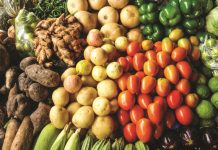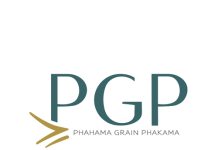The Registrar of Act No. 36 of 1947’s decision in 2022 to phase out active ingredients and formulations that may potentially cause cancer, genetic mutation and damages to fertility came into effect recently.
On 14 April 2022 the Registrar announced his intent to phase out active ingredients and formulations that meet the criteria of carcinogenicity, mutagenicity, and reproductive toxicity (CMR) categories 1A or 1B for the Globally Harmonised System (GHS) of classification and labelling. According to the new regulations, products that meet these criteria will not have their registrations renewed as from June 2024.
CMR category 1A refers to active ingredients and/or co-formulants that meet the criteria of being a known human carcinogen, mutagen or reproductive toxin, largely based on human evidence. Category 1B refers to a presumed human carcinogen, mutagen or reproductive toxin, largely based on animal studies.
The process involves discontinuing the registration and sale of products containing these hazardous substances. The Registrar has provided a maximum phase-out period of one year for stock of these remedies to be depleted from warehouses and on farms. These remedies will no longer be registered and cannot be used after 1 June 2025.
What is a substance of concern?
The definition of a substance of concern according to the regulations relating to agricultural remedies as promulgated under the Fertilizer, Farm Feeds, Agricultural Remedies and Stock Remedies Act (Act No. 36 of 1947) on 25 August 2023, refers to any substance that has an inherent capacity to cause an adverse effect on humans, animals or the environment and is present or is produced in an agricultural remedy in a sufficient concentration to present risks of such an effect. Such substances are further defined in the annexure to the regulations. Some of the criteria used to identify substances of concern are based on their intrinsic hazardous properties according to the GHS which was implemented through the Occupational Health and Safety Act by the Department of Employment and Labour in March 2021.
According to the GHS, the nature of a hazard is assigned by a hazard class, of which there are currently 29. Of these, 17 are physical hazard classes, ten are health hazard classes, and two are environmental hazard classes. These classes belong to a hazard group or type, depicted by a pictogram that can be used for several different hazards. Within these classes, the severity of the hazard is then allocated in terms of a hazard category expressed as a number – for instance, category 1 would be the most severe. Some of these categories are further sub-divided into divisions, which are expressed as a letter – A, B, C and so forth.
The way forward
Starting from 1 June 2024, the Registrar may not approve or renew registrations for agricultural remedies identified as substances of concern. Registration holders may, however, apply for derogations that are specific to a tradename and for specific essential uses. Whether these remedies remain available is dependent on the outcome of the application for derogation after conducting a risk assessment, making it available for public comment, and getting approval from the Registrar. Registration holders needed to have informed the Registrar of their intention to conduct risk assessments and seek derogations for the temporary extension of registrations by 31 May 2024.
If an agricultural remedy is classified as a substance of concern due to the hazard classification of a co-formulant in the remedy, and not the active ingredient, the registration holder could either replace the co-formulant with a less hazardous co-formulant or conduct a risk assessment and apply for a derogation. If none of these routes are followed, the remedy must be phased out.
Registration holders could also contest the hazard classification of their remedies if they have the necessary data in order to have the remedy reclassified. Should such an application be successful, the remedy will be exempted from the requirements of a substance of concern and will likely stay on the market for all registered uses. The converse could also apply, namely if data becomes available to the registration holder that classify a remedy as a substance of concern, but which was not classified as such by the sources used in the original classification, then that remedy will be phased out.
In all other cases, remedies that are classified as substances of concern and for which registration holders will not apply for a derogation, will be phased out.
Please consult with the relevant registration holders for more information regarding which of their products (specific tradenames) will be available for which time period and for which essential uses.
Please note: The information in this article is based on CropLife SA’s interpretation of promulgated acts, regulations and notices as received from the Registrar of Act No. 36 of 1947 and does not constitute a legal opinion. CropLife SA, its members and staff shall not be held liable for any damages, commercial or otherwise, to any parties as a result of their actions or interpretation of this position statement.



















